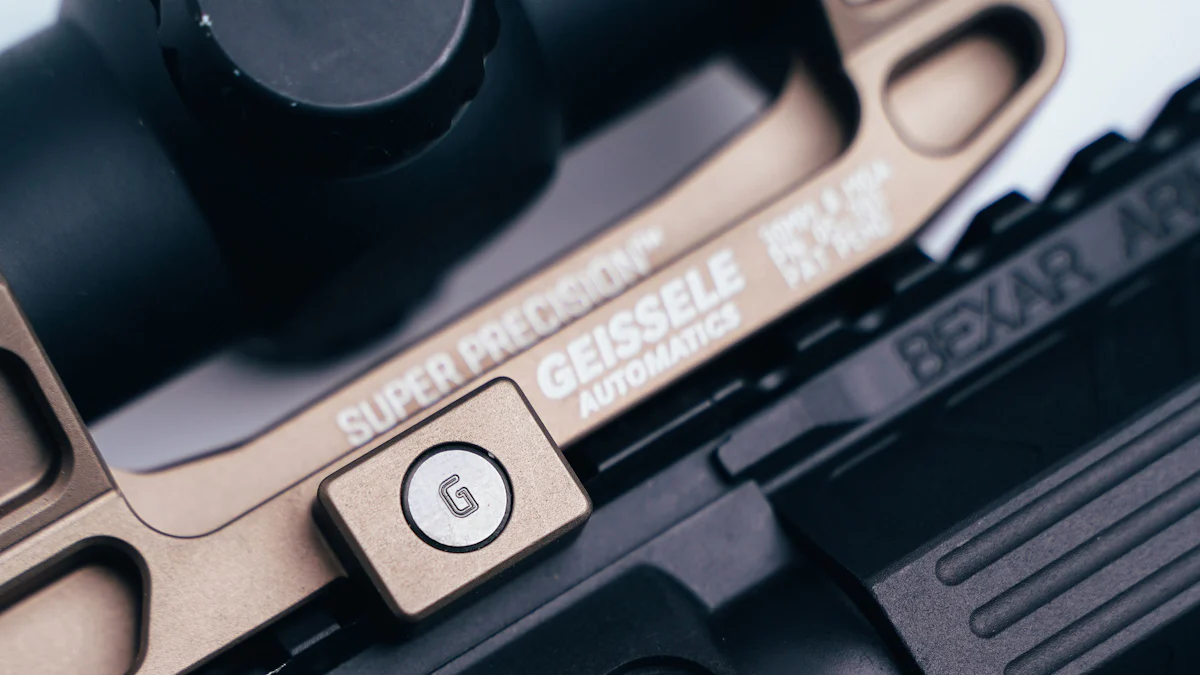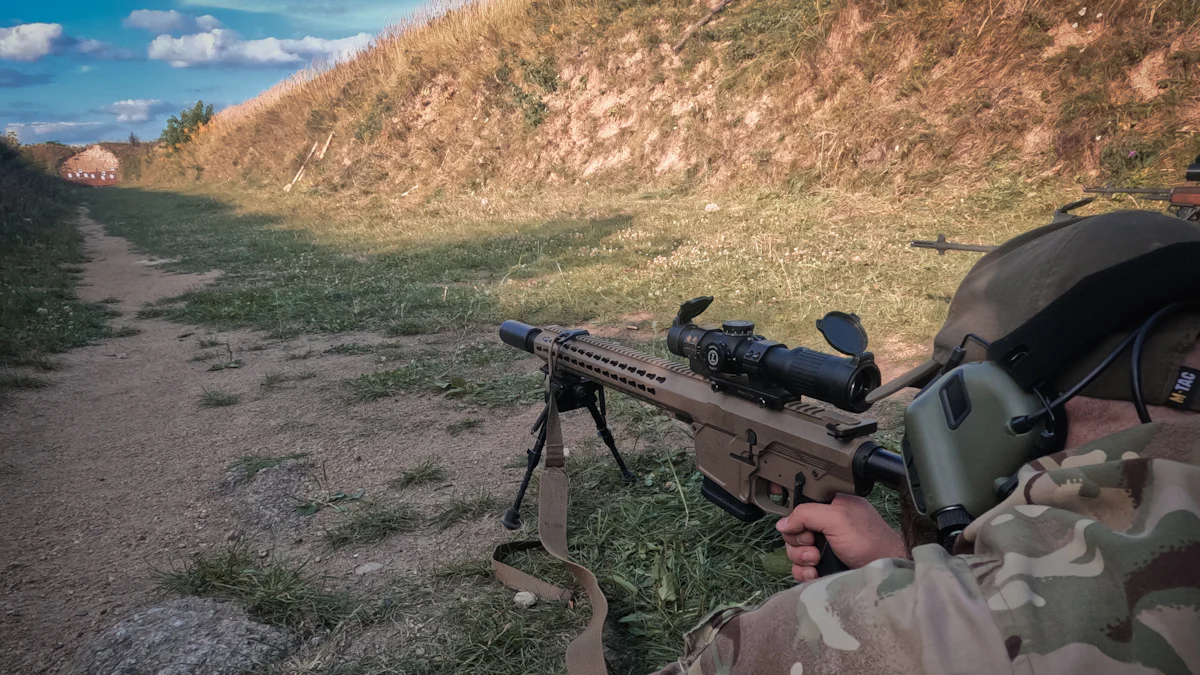
Rangefinder rifle scopes mix new technology with regular optics. They use lasers to measure how far your target is. A laser beam shoots out, hits the target, and comes back. The scope then calculates the exact distance for you. The range shows up quickly on a small screen in the scope. This helps you stay focused while aiming at your target. It removes guessing and lets you adjust better for long shots. With rangefinding built into the scope, it’s easier and more accurate to shoot using one handy tool.
Key Takeaways
Rangefinder rifle scopes combine traditional optics with laser technology for precise distance measurement, enhancing your shooting accuracy.
Understanding the core components, such as optics, laser systems, and reticle features, is crucial for effective use and improved aim.
Proper setup and alignment of the scope on your rifle are essential for ensuring accurate shots and maintaining comfort while shooting.
Regular practice in various conditions helps you adapt to environmental factors that can affect bullet trajectory, improving your overall shooting skills.
Maintaining and calibrating your scope is vital for optimal performance; clean the lenses and check the mounting to ensure accuracy.
While rangefinder scopes offer many advantages, be aware of their limitations, including higher costs and battery dependency, to make an informed decision.
Core Parts and Technology in Rangefinder Rifle Scopes
Optics and Zoom
The lenses in these scopes help you see clearly. They make images brighter, even when it’s dark outside. You can zoom in or out to see targets better. For example, a 4x to 12x scope works for close and far shots. The lenses let you focus on your target while seeing the area around it too. Clear views and adjustable zoom make aiming easier.
Laser Rangefinder System
These scopes use lasers to measure how far things are. A laser beam shoots out, hits the target, and comes back. The scope shows the distance on a small screen right away. Some models also work well at night for better accuracy in low light. With this built-in system, you don’t need extra tools to find distances quickly.
Reticle and Bullet Data Features
Modern scopes have reticles with helpful markings or dots. These markings show bullet drop or wind drift estimates. Some scopes even have calculators for aiming help. They consider distance, wind speed, and bullet path to guide your shot. These features make shooting simpler and more accurate for long distances.
How to Use a Rangefinder Rifle Scope

Setting Up the Scope
First, attach the scope firmly to your rifle. Use mounting rings or bases that fit your rifle correctly. Make sure the scope is level and tightly secured to stop it from moving during recoil. Adjust the eye relief by sliding the scope until you see clearly without straining. This step keeps you comfortable and safe when shooting.
Then, align the scope properly. Follow the instructions from the manufacturer to match the reticle with your rifle’s barrel. You can use a bore sighting tool or shoot test shots at close range to adjust it perfectly. Correct alignment helps ensure your bullet hits where you aim. Check this regularly, especially after moving your rifle around.
Measuring Distance to the Target
Turn on the rangefinder by pressing its button on the scope. Point at your target using the crosshair and hold still. The laser beam measures how far away it is by timing its return trip. In seconds, you’ll see the distance displayed on a small screen.
To get accurate readings, make sure you can clearly see your target without anything blocking it. If it’s hard to see or partly hidden, aim at something nearby that’s about as far away. Some advanced scopes work well in dim light too, so they’re useful early in the morning or late in the day. Practice using this feature in different situations to get better with it.
Adjusting for Accuracy
After finding out how far away your target is, change settings on your scope for accuracy. Turn elevation and windage dials to fix bullet drop and wind drift problems. Many modern scopes show helpful data for making these adjustments based on distance measured.
If there are markings on your reticle for distances, line up with those marks when aiming at targets farther away. For instance, use a 300-yard mark if shooting something 300 yards off. Take time aiming carefully and double-check all changes before firing a shot! Practicing often will help improve how well you hit targets over time.
Advantages and Limitations of Rangefinder Rifle Scopes
Benefits of Rangefinder Rifle Scopes
Rangefinder rifle scopes have many perks for better shooting. These scopes mix regular optics with smart technology, helping hunters and shooters. Here are some main benefits:
Precise Distance Measurement: The built-in rangefinder tells you the exact distance. You don’t need extra tools or guessing, making aiming easier.
Enhanced Shot Placement: Knowing the range helps fix bullet drop and wind drift. This increases your chances of hitting faraway targets.
Convenience and Efficiency: The rangefinder in the scope saves time and effort. You stay focused on your target without switching tools or guessing distances.
Advanced Features: Some scopes have ballistic calculators for real-time help. They check distance, wind speed, and bullet path to guide your shot.
Improved Confidence: A scope with accurate range boosts your confidence. Whether hunting or practicing, you’ll feel ready for precise shots.
“Rangefinder rifle scopes measure distances accurately, improving aim and quick targeting.”
Drawbacks of Rangefinder Rifle Scopes
Even with their benefits, these scopes have some downsides to think about. Knowing these limits can help decide if they’re right for you:
Higher Cost: These scopes cost more than regular ones due to added features. They might not fit everyone’s budget.
Complexity for Beginners: New shooters may find these features tricky at first. It takes practice to learn how to use them well.
Battery Dependency: Most rely on batteries for lasers and screens. If the battery dies, you lose the rangefinding functions.
Weight and Size: Extra parts make these scopes heavier and bigger. This can make rifles harder to carry during long hunts.
Limited Use in Certain Conditions: Some models work poorly in foggy or rainy weather. Lasers may not work well if targets are partly hidden.
By thinking about these pros and cons, you can decide if a rangefinder scope fits your needs best.
Practical Tips for Better Accuracy
Keeping Your Scope Clean and Calibrated
Take care of your scope to keep it working well. Dust and dirt can make the lenses blurry. Use a soft cloth to clean them gently. For tough spots, use special lens cleaner made for scopes. Don’t use regular cleaners because they can harm the lens coating.
Calibration makes sure your scope measures distances correctly. Shooting or moving your rifle can mess up its settings over time. Check the manual for how to recalibrate your specific scope model. Some scopes let you do this at home, but others need expert help. Regular calibration keeps the laser system accurate, especially for long shots.
Also, check if the scope is mounted properly on your rifle. Loose screws or tilted mounts can ruin your aim. Tighten everything and make sure it’s level. A clean and calibrated scope helps you shoot better and lasts longer.
Practicing in Different Settings
Practice often to get better at aiming in all conditions. Weather like wind or rain can change how bullets travel. Try using your scope in different weather to learn how it affects shots. For example, wind may push bullets off course, and dim light makes targets harder to see.
Set up targets at various distances to test the rangefinder’s accuracy. Use the laser to measure distance and adjust your aim as needed. Practice shooting while standing, kneeling, or lying down to prepare for real situations.
If there are trees or rocks around, practice aiming near obstacles too. This helps when targets are partly hidden during hunting or tactical events. Learning these skills through practice will make you ready for any challenge ahead.
“With knowledge and practice, every shot gets closer to perfect.
Rangefinder scopes mix smart tech with regular lenses for better aim. Knowing their parts and how to use them helps a lot. These scopes measure distance exactly and adjust for weather changes. They also help you aim more confidently at your target. Practice often and take care of the scope to keep it working well. Whether you’re new or experienced, these scopes make shooting easier and more successful in many situations.
Welcome to AirSeeker, an ODM solution provider with 12 years of experience specializing in thermal imaging technology. We are dedicated to offering top-notch customized solutions for outdoor hunting enthusiasts, outdoor observers, shooting enthusiasts, farm monitoring, and law enforcement agencies. Product ranges from thermal scope for rifles, thermal clip on, thermal monocular, binoculars, including night vision clip on; All products are not only truly waterproof and impact-resistant but also feature sniper-level ballistic calculation technology, ensuring clear and reliable visibility in any environment.
Business Cooperation : info@airseekertec.com
